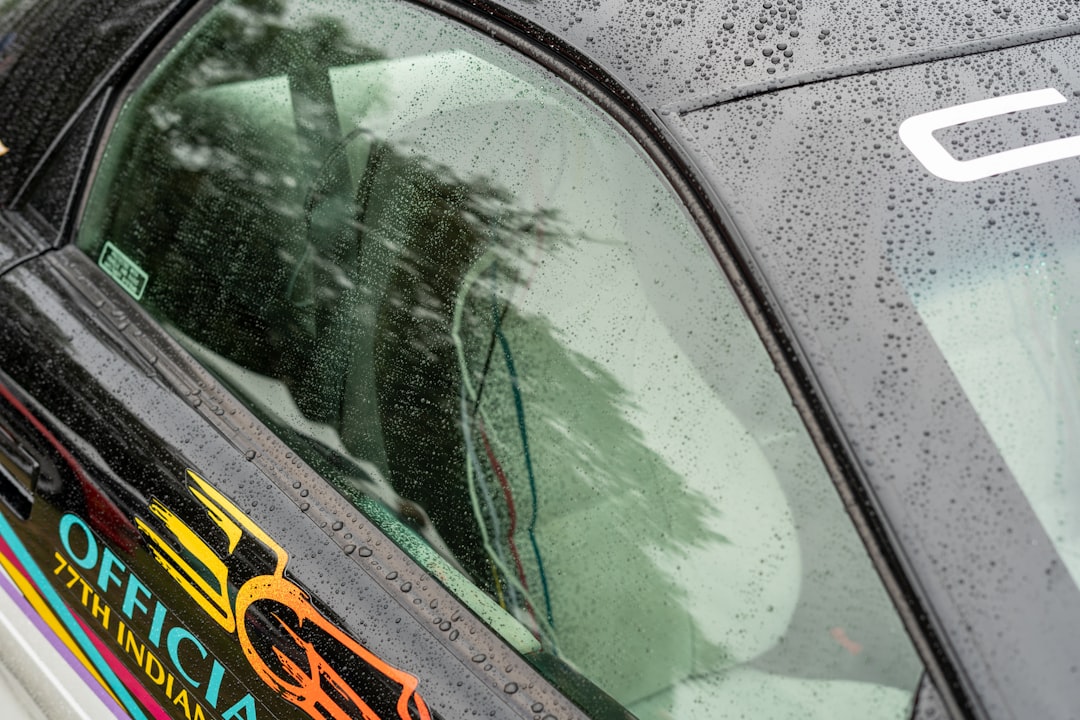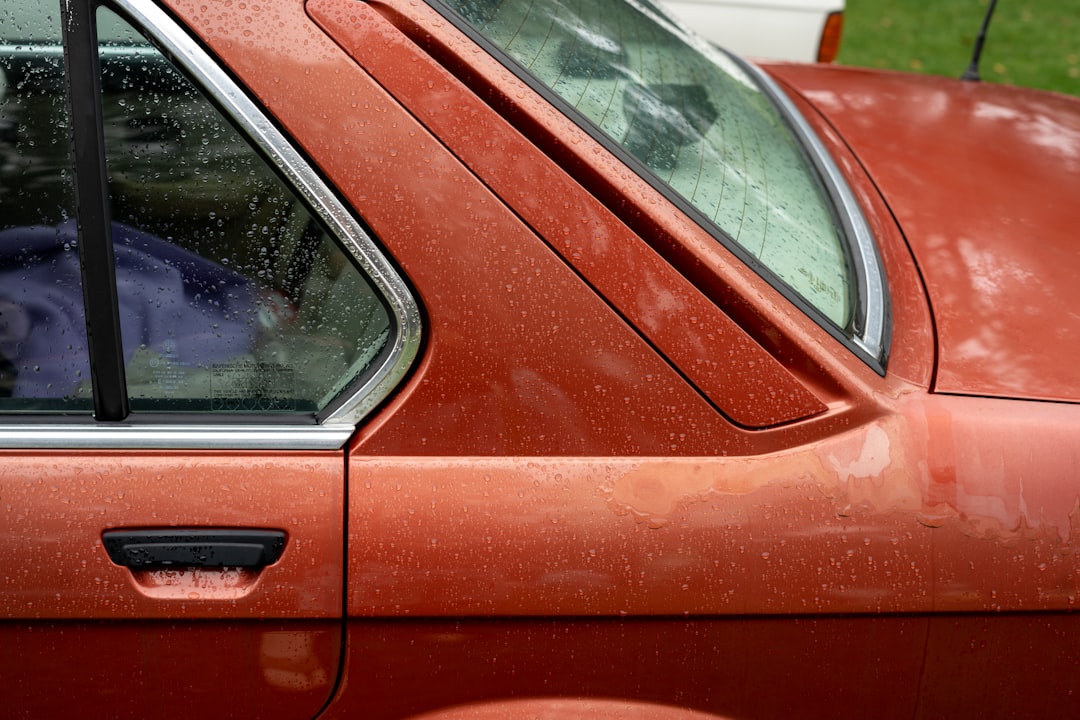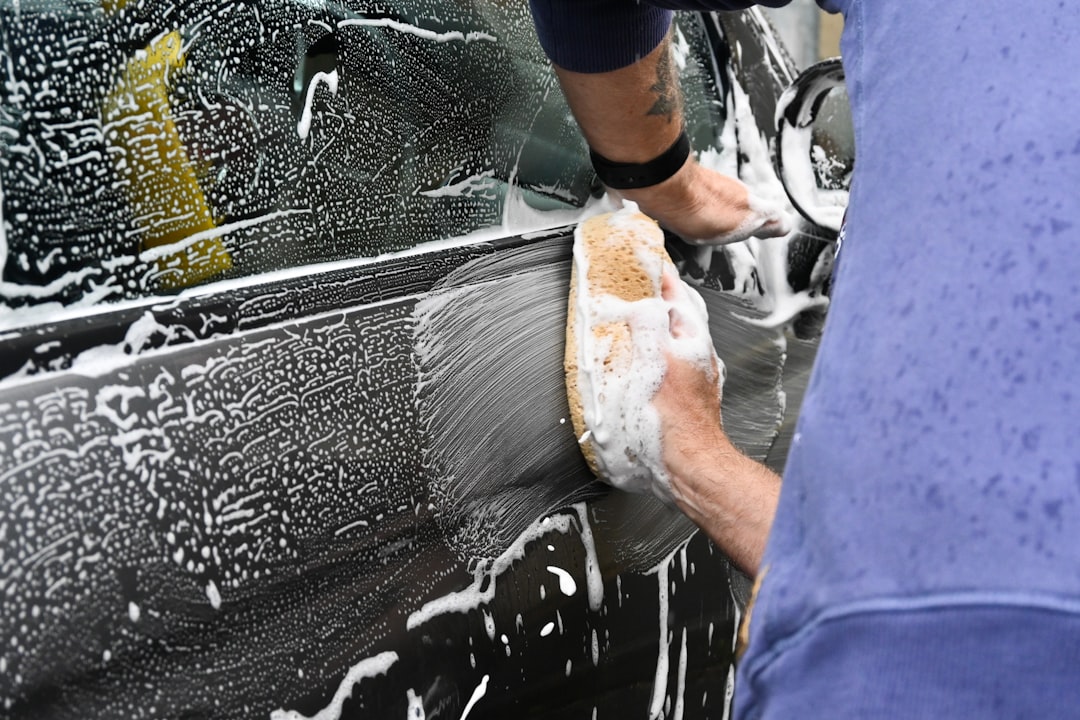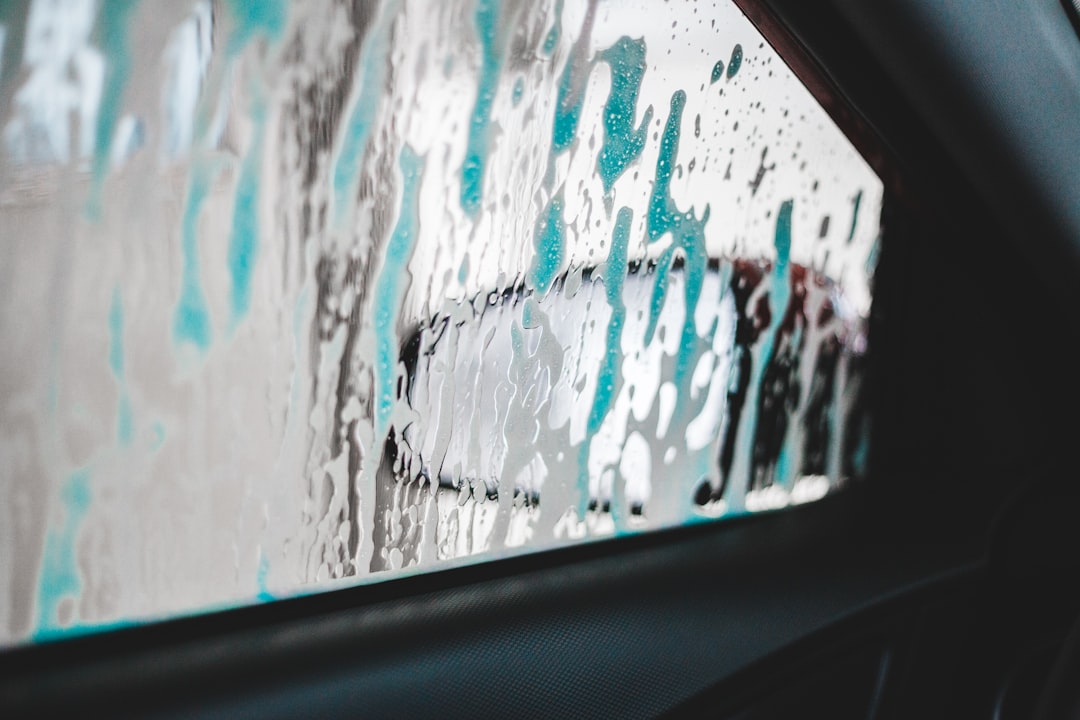

Engage prospects with a scan and streamline customer engagement with FREE QR code marketing tools by Sona – no strings attached!
Create a Free QR CodeFree consultation

No commitment

Engage prospects with a scan and streamline customer engagement with FREE QR code marketing tools by Sona – no strings attached!
Create a Free QR CodeFree consultation

No commitment
Customer expectations for car window tinting services have risen alongside the digital transformation in today’s marketplace. Traditional marketing tools such as brochures, store signage, and fleet branding still provide value, yet they struggle to link offline curiosity with digital engagement. For window tinting businesses, this disconnect can lead to missed opportunities and lower appointment growth.
QR codes have emerged as an affordable and scalable solution to bridge the gap between physical interactions and measurable online action. By eliminating friction points such as paper forms and manual sign-ups, QR technology addresses the challenge of losing track of prospects who express interest but do not fully engage. With no app required, these codes can automate appointment bookings, enable contactless consultations, and collect valuable feedback, ensuring more offline interactions convert to digital leads.
Integrating QR codes into pivotal offline moments lets window tinting professionals open new pathways for customer acquisition and retention, capturing engagement data at the source. With strategic execution, QR code campaigns improve operational efficiency, recover lost leads, and modernize the traditional window tinting marketing playbook. Platforms like Sona QR help you create, track, and optimize codes at scale, then connect scan activity to your CRM and revenue through Sona for offline attribution.

Strategic QR code placement connects physical touchpoints with digital workflows, improving lead capture and conversion rates for car window tinting services. When someone sees your van at a stoplight, passes your shop window, or handles your aftercare kit, a simple scan can move them directly into a booking flow, a quote calculator, or a messaging channel with your team. The result is fewer lost prospects, faster follow-up, and better attribution for your marketing spend.
Begin by placing QR codes on in-store posters, vehicle wraps, and direct mailers to guide prospects to targeted digital destinations. Use clear calls to action like “Scan for a free quote,” “See tint options on your car,” or “Book same-week installation.” Attribute each placement in a QR platform and connect it to your CRM so every scan generates a tagged lead. From there, automate SMS or email follow-ups that offer pricing, availability, and promo codes to close the loop.
This approach directly replaces analog processes that slow down conversions. Instead of paper brochures that go into glove compartments, send people to a landing page with a tint visualizer and instant quote. Instead of phone-only scheduling that gets backed up, route scanners to a mobile-friendly calendar. Instead of manual review requests that are easy to forget, present a QR code at checkout that opens Google with the review text pre-filled. Modern, multi-code platforms make it easy to update campaigns and maximize your investment in physical assets without reprinting.
To maximize impact, define what success looks like. For example, you might aim for a 20 to 35 percent scan-to-form completion rate in-store, a 10 to 20 percent scan rate on direct mailers, or a 5 to 12 percent scan rate from curbside signage. Track lift in appointment volume per channel and measure conversion speed from scan to scheduled installation. Over time, optimize your creative, your offers, and your device destinations based on the data.

In car window tinting, capturing actionable leads from offline engagement is a challenge due to mobile-first research behaviors and short attention spans. People notice your fleet vehicle, your storefront, or a yard sign outside a job site, then search for competitors or forget altogether. QR codes recapture this attention by closing the gaps left by printed flyers, appointment cards, and after-service instructions. One scan moves a prospect from awareness to action while your brand is top of mind.
Dynamic QR codes offer flexibility. If you promote a seasonal discount on a banner or a trade show display, you can update the landing page, offer details, or hours without reprinting. Appointment cards can link to a live calendar that reflects technician availability. Aftercare stickers can route to maintenance instructions, warranty registration, and accessories upsell pages. Each scan generates first-party data, including location, time, and device, creating a feedback loop for attribution insights and ongoing campaign optimization.
Beyond convenience, QR codes address the need for speed and simplicity in this industry. Customers often compare tint percentages, ceramic versus dyed films, heat rejection ratings, and price tiers while on the go. A QR code on a sample board can open a page that explains options, shows photos, and allows them to request a quote in seconds. On the operations side, the data captured at scan time lets you refine staffing, inventory, and service packages based on what people actually engage with.
Finally, QR codes are cost efficient. You can produce codes for every campaign on every surface you control: storefront glass, countertop displays, door hangers, sponsorship banners, loaner car paperwork, and mobile van wraps. When managed through a platform like Sona QR, these codes become trackable assets that you can edit and improve over time, turning static print into dynamic performance marketing.
Car window tinting businesses benefit from choosing the right QR code formats for each customer interaction. Selecting formats that match the intent of the moment reduces friction and increases conversion.
Dynamic QR codes are best for time-sensitive offers and campaigns that need measurement. They allow you to edit destinations, add UTM parameters, and personalize content by source without reprinting. Static codes can be suitable for evergreen destinations such as your homepage or contact card, but keep in mind they lack tracking and flexibility. As a rule of thumb, use dynamic for any campaign where you want data, retargeting, and agility.

Growth in car window tinting is often limited by a lack of insight into when and where prospects engage with marketing. QR codes transform every surface into a measurable touchpoint, delivering both a lead and an engagement signal each time someone scans. When used consistently, they reveal which locations, messages, and formats are working hardest to drive appointments.
Identify your highest-traffic moments and surfaces. Store entrances and windows, point-of-sale counters, customer lounge tables, and parking lot signs all receive high visibility. Mobile service vans represent moving billboards: adding a QR code with a clear benefit such as “Scan for same-week openings” can convert casual interest into immediate action. For mobile providers, QR-coded flyers and door hangers placed in neighborhoods after a job build reach and support remarketing. Invoices, aftercare stickers on car door jambs, and warranty cards create post-purchase touchpoints for reviews and referrals.
Consider segmenting growth opportunities by audience behavior. Commuters scanning a rear bumper decal need fast access to booking, while weekend window shoppers prefer galleries and pricing. Trade show attendees or car meet participants might scan for show-only discounts and educational content. With the right placement and message, QR codes can convert passive impressions into measurable demand that you can nurture over time.

Use QR codes in these service scenarios to convert interest into action. Each example includes what it does, where to place it, and the primary outcome you can expect.
To quantify impact, track scan-to-lead rates for each use case. Many tint shops observe 15 to 30 percent higher appointment rates when booking flows are delivered via QR at the moment of interest. Review request codes presented at checkout can increase review volume by 2 to 3 times within 60 days. As always, performance varies by creative, placement, and incentive.
Each QR code scan is a signal. It captures intent, context, and timing that you can use to build high-value audiences for retargeting. By deploying multiple QR codes across touchpoints, your tint shop can automatically segment prospects by what they scanned, where they scanned, and when they scanned, then follow up with messages that match their journey stage.
Create cohorts such as “storefront scanners,” “event scanners,” and “post-service scanners.” Tag scanners by interest, for example “ceramic tint researchers,” “privacy-focused shoppers,” or “lifetime warranty registrants.” Feed these segments into your CRM and marketing automation to trigger tailored sequences. Storefront scanners who explored pricing might receive an SMS with a limited-time discount. Warranty registrants could get a maintenance tips series, then an upsell for windshield tint or paint protection.
Use timing to your advantage. For instance, follow up within one hour of the scan for booking prompts, within 24 hours for educational content or testimonials, and within seven days for a final incentive. Layer in channel and location data to refine your approach: a scan from a van wrap might warrant a fast, simple text path, while a scan from a waiting room poster can link to deeper product content.
With Sona QR, each code can be connected to custom fields and tags that sync directly to your CRM or ad platforms. That means you can build Facebook Custom Audiences from QR scanners, score leads in HubSpot based on scan behavior, and alert your sales team when a high-intent action occurs. The result is precision marketing based on real behavior rather than assumptions. For tactical retargeting, see Intent-Driven Retargeting.
QR codes are more than just convenient links. They act as connectors across your offline and digital campaigns, enabling real-time engagement and richer data collection across every channel. For car window tinting services, they turn your shop, your vehicles, and your print media into measurable onramps that feed your digital engine.
Integrate QR codes into channels you already use. Pair them with Google Business Profile posts by printing a code on your storefront that opens your GBP for instant reviews. Add them to postcards and door hangers that reach local neighborhoods, each with a unique URL for attribution. Include them in sponsorship banners at car meets and high school sports fields. Every scan reveals which placements are winning and which messages need work.
A centralized platform like Sona QR lets you manage codes across all media, monitor performance, and sync scan data with your CRM and ad accounts. That orchestration turns QR scans into measurable steps within a connected buyer journey.
Turning QR from a clever add-on into a revenue driver starts with disciplined execution. Before you print or deploy anything, align your QR strategy with clear outcomes, a thoughtful customer journey, and a plan for measurement and optimization. The following steps are tailored for car window tinting teams and can be repeated for each campaign throughout the year.
You will move faster and learn more when every code has a purpose, every placement matches a moment of intent, and every scan flows into automated follow-up. Use these steps as a template, then adapt based on your unique market, seasonality, and service mix.
Begin with a single, specific objective. For example, increase scan-to-contact conversions at regional auto shows, boost weekday bookings by promoting same-day slots, or double the number of Google reviews from post-install scans. Clear goals inform your destination choice, your CTA, and your follow-up strategy.
Choose the code type that best supports your goal. Dynamic codes are recommended for most campaigns since they enable editing, tracking, and testing without reprinting.
Design influences scan rates as much as content. Make the code visible, branded, and paired with a benefit-oriented CTA that tells people exactly what they get.
Deploy codes where your audience naturally engages. Prioritize placements that match your campaign goal and pair each with the right message.
Measurement turns QR from a gimmick into a growth engine. Track scans by source, monitor conversion behavior, and iterate quickly.

Use modern QR tracking to turn real-world engagement into measurable outcomes. For tint shops, the goal is not only to know that someone scanned a code but to understand what that scan contributed to pipeline, appointments, and revenue. Without end-to-end visibility, you cannot confidently shift budget toward the placements that perform best.
A robust platform closes that loop. Sona QR captures scan details such as time, device, location, and campaign source, then sends that data to your CRM. Sona.com applies identity resolution and multi-touch attribution to connect anonymous scans to known contacts and revenue events. When a prospect who scanned a van wrap later books from an email reminder and pays a deposit, you can see the full path that influenced the sale.
When tracking is set up properly, you can benchmark key metrics for your shop. Aim for scan rates of 3 to 8 percent on direct mail, 8 to 20 percent on in-store signage, and 1 to 4 percent on vehicle wraps depending on traffic speed and design. Track scan-to-lead conversion and scan-to-booked appointment percentages by placement. Over time, your benchmarks will improve as you refine design, CTAs, and offers.
Expanding QR success is about consistency, clarity, and automation. QR codes perform best when each placement has a distinct purpose and the next step is obvious. Layer in automation to follow up while interest is high, then iterate with data to raise your conversion averages.
Choose the practices that match your most common media and sales motions. If most of your walk-ins come from storefront visibility, invest in larger codes and strong in-window CTAs. If your brand relies on mobile service, prioritize vehicle wraps and neighborhood flyers with short, scannable CTAs that trigger texting. Tie everything back to your CRM so repeat business, referrals, and reviews are easy to encourage. For broader planning, see this window tint marketing guide.
Creative deployment examples include printing QR codes on warranty cards to collect reviews and enable future upsells, adding codes to invoices for loyalty offers, and placing a small code on the rear window decal of loaner vehicles to drive referrals. With Sona QR, you can launch these codes quickly, then track and improve them using unified analytics.
Car window tinting businesses are using QR codes to capture impulse interest and convert it into scheduled jobs. One midsize tint shop in a suburban market placed unique QR codes across storefront windows, van wraps, and neighborhood postcards. Each code routed to a campaign-specific landing page and all scan data synced to their CRM via Sona QR. Within 90 days, the shop reported a 22 percent increase in booked appointments, a 31 percent reduction in time to schedule, and a 2.5 times increase in Google reviews due to a checkout QR flow.
At local car meets, a boutique tint studio used a large, eye-level banner with a QR code that opened a “Show Special” page featuring a 48-hour booking incentive and a gallery of recent show cars. Staff wore badges with matching codes so attendees could scan during conversations. Event scans were tagged in Sona QR, which triggered a same-day SMS follow-up. The studio converted 18 percent of event scanners into booked appointments within one week and used the segmented list for future promotions.
Post-install survey codes can feed both customer experience and reputation. A shop added QR codes to invoices and aftercare instructions that opened a 2-question survey, then routed happy customers straight to Google with a pre-filled review template. Detractors were taken to a private feedback form for immediate outreach. Over two months, average star rating rose from 4.2 to 4.7, and the shop ranked in the top three for “window tint near me” in several local searches.
Referral loops work especially well in this vertical. Shareable QR codes printed on thank-you cards encouraged customers to refer friends with a dual-sided discount. Referrers received a small accessory or a discount on future services, while new customers got a first-time offer. Campaign tracking showed that referrals accounted for 14 percent of new monthly bookings, with a higher average order value due to trust transfer. QR codes made it easy to attribute these wins without manual reporting.
Experts agree that visibility, clarity, and follow-through determine QR success. Place codes in high-traffic, eye-level locations and size them for real-world conditions. Use dynamic codes for time-sensitive offers and campaigns where you want data and flexibility. Train staff to encourage scanning and explain the immediate value. Consistently segment scan data for smarter remarketing, and track outcomes from scan to revenue so you can allocate budget with confidence.
Avoid common pitfalls that reduce performance. Do not place small codes on busy or glossy backgrounds. Do not bury the benefit behind a generic “Learn more.” Do not send scanners to slow-loading, desktop-only pages. Do not use a single generic code for every placement because you will lose attribution and learning. Do not forget to close the loop with automation, especially for after-hours scans.
QR codes are more than digital conveniences. They are a catalyst for operational efficiency and sustainable growth in car window tinting services. By making each touchpoint measurable, you can recapture leads that once slipped away, personalize follow-up at scale, and allocate budgets to the channels that truly drive revenue. Shops that treat QR codes as a strategic system rather than a one-off tactic consistently see higher appointment volumes, better reviews, and stronger customer loyalty.
As window tinting businesses shift toward a data-driven customer experience, the deliberate use of QR codes enhances awareness, engagement, and conversion at every stage. Start with one or two high-impact placements, tie scans to your CRM through Sona QR, and build from there. With clear goals, dynamic codes, and disciplined measurement, you will turn physical surfaces into a dependable source of digital demand and long-term growth. Start creating QR codes for free.
QR codes have revolutionized car window tinting services by turning traditional marketing into measurable, customer-driven growth. Whether it’s attracting new clients, enhancing the customer experience with instant access to service details or promotions, or tracking which offers convert best, QR codes provide a seamless bridge between offline engagement and online action. Imagine knowing exactly which tint packages or discounts resonate most—and being able to adjust your campaigns instantly to maximize bookings.
With Sona QR, you can effortlessly create dynamic, trackable QR codes tailored to your tinting business, update campaigns in real time without costly reprints, and link every scan directly to revenue streams. No more guesswork or missed leads—just smarter marketing that drives conversions and builds lasting customer relationships. Start for free with Sona QR today and turn every scan on your car windows into a loyal customer and a growing bottom line.
Use QR codes on storefronts, vehicle wraps, direct mailers, and aftercare kits to direct prospects to booking pages, quote calculators, or messaging channels, enabling faster lead capture and automated follow-ups.
Prioritize QR codes on mobile service vans with clear CTAs like scan for same-week openings, and distribute QR-coded flyers or door hangers in neighborhoods to convert casual interest into bookings.
Implement strategic QR code campaigns to increase appointment bookings, automate follow-ups via SMS or email, improve conversion rates, and optimize marketing spend based on scan-to-revenue tracking.
Automate SMS follow-ups triggered by QR code scans that provide pricing, availability, and promo codes, and send timely reminders within hours or days to encourage bookings and reduce no-shows.
Use QR codes to enable instant booking with real-time availability and automate SMS or email reminders to confirm appointments, reducing missed bookings and speeding up scheduling.
Combine QR codes on high-traffic surfaces with dynamic, benefit-driven CTAs, targeted offers, referral programs, and multi-channel campaigns including social media, direct mail, and events.
Encourage customers to scan QR codes in your shop to upload before-and-after photos tagged with your handle, run giveaways for featured posts, and build retargeting audiences based on scan engagement.
Use QR codes for appointment booking, post-installation feedback, product education, referral programs, before-and-after galleries, and event-specific discounts placed on vans, invoices, and signage.
Present QR codes at checkout, on invoices, and warranty cards that open pre-filled review forms or surveys, and offer incentives like discounts or freebies to increase response rates.
Integrate QR codes to automate lead capture and appointment scheduling, track scan data to optimize staffing and inventory, and use dynamic codes for flexible, measurable marketing campaigns.
Use Sona QR's trackable codes to improve customer acquisition and engagement today.
Create Your FREE Trackable QR Code in SecondsJoin results-focused teams combining Sona Platform automation with advanced Google Ads strategies to scale lead generation

Connect your existing CRM

Free Account Enrichment

No setup fees
No commitment required

Free consultation

Get a custom Google Ads roadmap for your business






Launch campaigns that generate qualified leads in 30 days or less.
